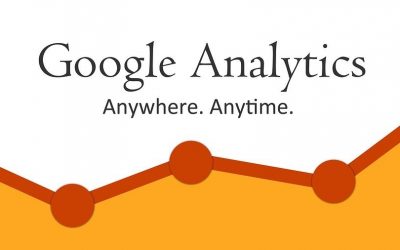I write this as yet another unsatisfied graphic design client (not mine) has come to me for help to fix a mess the graphic designer they did use made of their advertising materials. Sigh.
In today’s digital world it seems like “graphic designers” and “website designers” are a dime a dozen and anyone with a computer and Photoshop thinks they are a professional graphic designer. But, there is so much more that goes into graphic and website design than just being able to manipulate an image in Photoshop.
What A Professional Graphic Designer Should Know
Graphic designers need to know more than just how to use Photoshop. Designers should be able to solve visual communication problems or challenges for their clients. In doing so, the designer must identify the communications issue, gather and analyze information related to the issue, and generate potential approaches aimed at solving the problem. This goes far beyond just simply churning out a flyer in Photoshop.
Then there are technical things they need to know. There’s a knowledge of typography, understanding color theory, being able to identify and create visual balance, knowing how to use white, or negative, space effectively, the differences between DPI and PPI, and even the finer points of file preparation for printing that also should be understood to be considered a true professional.
A print designer should understand the processes involved in printing, both offset and digital, to be able to produce press-ready artwork. They should also understand the how different printing methods, whether it is traditional ink, screen printing, stitching, or vinyl, interacts with the medium it is being applied to. They should know the file formats an offset or digital printer, embroiderer, vinyl cutter, or screen printer needs to receive. They should know when it’s appropriate to use Photoshop or Illustrator or InDesign for a particular project.
Logo designers should know things like how fine details and intricate logos are not going to reproduce consistently across all types of possible printing, and they should be able to adjust for that in their logo designs. They should know that the more colors that are introduced into a logo design, the higher the potential printing costs are going to be for the client. They should know to provide their client with various formats of their logo for different uses.
A website designer should know not only how to design the page, but arguably, how to actually build it too using XML, HTML, CSS and basic scripts. I’m not saying they should be able to create a full-fledged web application with complex functionality, but they should know the basics of how the page comes together and how to style it.
How Do You Know If You Are Hiring a Good Graphic Designer
I can’t stress enough — for starters, please look at the portfolios of those you hire to do your marketing, graphic design, or web development before you hire them! Make sure the work they are showcasing is their own (believe it or not, many people STEAL other designers work — I had it happen to me) and assess if they are producing the quality of work they want to have done for their company.
Many people talk the good talk, but when it comes time to show the proof they banter about saying things like, “Well, I am so busy I just don’t have time to work on my website,” or “I wish I had time to put together a portfolio, but my clients come first.” Any graphic designer or website designer worth their salt is going to have something to show off to you at a moment’s notice!
Don’t fall for the “I’m just too busy line,” especially when it comes to website design. If someone is marketing themselves as a website designer, they better darn well have a kick-butt website to show potential clients.
Here are six questions to ask yourself before hiring a creative professional for your next project:
1.) How strong is their portfolio?
I can’t stress how important it is to look at a potential design hire’s portfolio. Either you are going to like the designer’s work, or you aren’t. Graphic design is entirely subjective, but the foundations for being able to create a strong visual presentation should be universal.
Most graphic designers do have a particular style for their work, although the best ones should be able to adapt to the needs of their specific client.
Make sure you are looking at actual work done for real clients and not just spec work or work done for the sake of putting it in a portfolio. Also, make sure that the work being presented is actually the client’s own work. I once ran across the portfolio of someone in England who had swiped my website design work and added it to his portfolio, along with the work of several other great designers. He belonged to the same website developer Facebook group as us and decided that since he was based in England and we were in the U.S. no one would be any the wiser if he tried to pass our work off as his!
So how do you assess if the work is theirs? Check with their clients who the work was done for, or ask the designer about the work and how they arrived at the design that they did if it seems questionable.
It’s even better if they have case studies available to read which examine the client problems and the solutions they arrived at to solve those issues. Sometimes the project may not always be the best looking of the bunch, but if it addressed the issue for the client and solved it then it did its job.
By looking at their portfolio, you should be able to get a sense of the designer’s actual abilities and skills, as well as how they are likely to work out your problems and come to a solution for them.
2.) What do their online reviews look like?
Many people put “testimonials” and “reviews” on their websites. Sometimes it’s hard to know if they are real or not. The best way to check reviews for potential designers in the age of social media is to look at their business pages on Facebook, Google, Yelp, and other sites that allow people to leave online reviews.
The graphic designer being reviewed on a third-party website can’t manipulate these real-world reviews, so generally, you are getting real impressions from people who have worked with them.
Of course, you want to make sure those reviews aren’t merely being left by the designer’s mom, brother, and Aunt Barbara. Often you should be able to reconcile those reviews with portfolio pieces.
So, what if they have a couple of bad reviews? As you would with a movie or restaurant review, take bad reviews subjectively. Read them carefully, vet the person leaving it (maybe that person only leaves bad reviews and never good ones…ugh!), and read the response to a negative review by the designer.
Many times the responses give you some insight into the working relationship between the client and designer. It could be that their personalities didn’t mesh or that there was miscommunication on one or both parties end.
I wouldn’t let one or two bad reviews kick them off your radar, but that them in their totality and weight the good reviews against the bad ones, if need be.
At the very least, ask your potential graphic designer or marketer to provide you with some real references, just as any job interviewer would. If they hesitate or don’t have any, that should be a red flag.
3.) What is the graphic designer’s formal education?
As I mentioned before, there is a lot more that goes into graphic or website design than just being able to manipulate an image on a screen. Formal education comes with things such as design theory and execution, as well as how to master particular graphic design programs, and can be anything from graphic design certifications to an actual bachelor’s or master’s degree in graphic technology.
Now, I am sure plenty of self-taught designers are going to pounce on me for saying this, and I do realize there are many excellent designers who have never taken a design class in their life and plenty of mediocre designers with a master’s degree.
Even self-taught designers who are serious about their craft are going to have gotten some training beyond just playing around with Photoshop on the computer, even if it is through some sort of online training.
I don’t personally hold a formal degree in graphic design. However I have taken, literally, thousands of hours of various graphic design and website development classes to hone my different skills over the years. I firmly believe if someone loves what they do they never want to stop learning about how to do it better. This is called “mastering your craft.”
4.) What is the designer or website developer charging for their work?
Bottom line — cheaper is not always the best route to take! Now I realize that everyone wants to save a buck when they can, but when you go into a design project you need to be realistic with your budget and what you are going to get with it.
If you think paying $100 for a logo is realistic, think again. Many times people think logos are just slapped together because many are so simple (so simple they work!), but for a professional, that is not true. I spent over 25 hours on the most recent logo design I did — conceptualizing, sketching, refining, and working with color palettes. And that was with the client giving me a pretty good idea of what they wanted for their logo.
On top of that, I produced a logo style guide and various versions of the logo for them to use across multiple mediums. They also got black and white and grayscale versions of the final logo.
Do some research and consider what a realistic range really is for the work, and what designers in your area charge for it.
Do you think I work for $4.00 an hour with almost three decades of experience in this business under my belt? That would be a big NOPE! If you want professional work, be prepared to pay a professional price for it.
5.) How is their business model run?
Is the person you are hiring a full-time graphic design professional working only for their clients? Are they working elsewhere and moonlighting at night for some extra funds? Is their “real” job in the graphic design or website design niche?
If you are working with a professional who does this full time, either through their own business or as a full-time freelancer, they are generally going to be accessable to you during regular business hours and they answer to no one but their clients.
Is your graphic or website designer is only available to take your calls or emails outside of regular business hours, on lunch breaks, or on weekends? Then chances are they are just doing it on the side to make some extra money, or are trying to build a business that will allow them to leave their full-time job at some point, but aren’t quite there yet.
There is nothing inherently wrong with working with a “moonlighter,” if all the other things check out, you are okay with those time restrictions, and their “full time” job is in the graphic design space. I was a moonlighter many years ago myself when I wanted to dip my toes in the waters of owning my own business, but still needed a 9 to 5 to pay my bills.
However you have to wonder if you are going to be getting their full attention when they have to answer to a 40-hour week employer first and foremost and you are an afterthought?
6.) Where is their physically location compared to yours?
Undoubtedly physical proximity no longer needs to be as much of a barrier or consideration as it was before the digital age, but there are still some geographical ramifications to take into consideration.
Many people prefer to work with local talent — whether it be because of workflow, communication, time zones, or the fact that if an in-person meeting simply must be done that possibility is there. However, when I mention proximity, I am generally referring to staying within your own country or region. I myself have clients spread out all over the U.S., not just in my local area.
But, with the popularity of Fivver and several other online job sourcing sites, many people have taken to working with graphic designers overseas to save money. When they do this they tend to run into cultural differences that show up in the work and language barriers that are often difficult to overcome.
To be blunt, if your company operates in the United States and you hire someone out of India to build your website, there are likely to be some serious cultural clashes. Language issues aside, things such as the meaning and association of colors can vary drastically across different cultures.
Overseas outsourcing of your work may sound like a good idea to save money, but you could end up miscommunicating your company’s message to your target audience in the process.
Also, personality and professional styles can vary significantly from country to country. Did you know that the US, Israel, Scandinavia, and Canada, among a few others, are considered low-context cultures, while Africa, India, Pakistan, Russia, and many others are considered high-context cultures?
Low-context cultures tend to be more direct, less formal, and individualistic; while high-context cultures are more indirect, more formal, and more collectivist. This means that a subordinate from a high-context culture will generally have a harder time speaking up when something goes wrong. Is it really a good idea to work with someone who is less likely to inform you of issues or problems when they arise?
These cultural differences vary when it comes to advertising too. According to Wikipedia marekting perspectives can be very different in high- and low-context cultures:
If we take Japan as an example, advertising is very colorful, full of images, gestures, and sounds with powerful meaning behind them. Dialogue is only one part of the advertising; it is not central. Every vocal and non-vocal expression is explored when the consumers are part of a high-context culture, and they are very sensitive to it. McDonald’s advertising is very different in places like Japan when compared to the United States. It uses more colors, movements, and sounds, while the American version is more straightforward.
This makes working with a designer from your own culture a much better choice to get more positive results in your business marketing or graphic design.
Conclusion
So now the client who came to me after hiring someone before properly vetting their abilities is going to have to pay someone to fix the mess the cheaper solution they went with made. It is going to cost them additional time and money, which I hate to see.
And, it could have been avoided based on the work they showed in their porfolio online. They actually gave the client exactly what they showed in their portfoilo — work which frankly wasn’t that good or professional. My guess is the client never even looked at it.
But, at least the client was perceptive enough to know that the final product that they received was not the image they wanted to portray to their target audience, and they knew better than to run with it as it was.
There are plenty of great graphic designers and website developers out there. Don’t choose just anyone to handle your marketing, advertising, graphic design, or website development project.
Do your due diligence, just as if you were hiring an employee, and make sure that you are hiring the right person for the job at hand.
- How a Boutique Web Design Agency Offers More Personalized Service - June 23, 2025
- When Should You Redesign Your Website? 7 Warning Signs - June 20, 2025
- We’re Honored: Named One of the Best Web Design Blogs in Florida by FeedSpot - June 10, 2025





